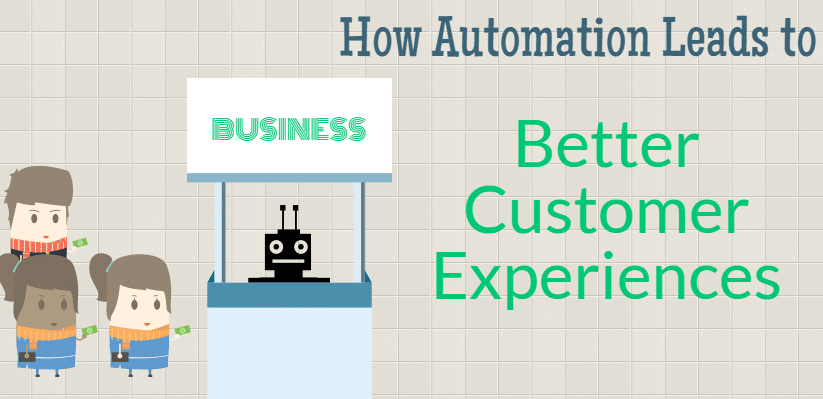
How Automation Leads to Better Customer Experiences
AI and the automation of mundane procedures and tasks is definitely a plus for employees. Better administrative automation leads to better staff efficiency and productivity. However, a recent article by PWC suggests that automation leads to better customer experiences as well.
Basic tasks such as data entry and administration are often mundane and monotonous. By giving these tasks to an artificial intelligence machine, you free up employees to do important, more meaningful tasks. Furthermore, the money saved can be put back into your workforce.
Previously outsourced services can be returned to local employees, and you can expand your customer service base. There are so many benefits to expanding your AI tools and automating processes.
Perhaps most importantly, your customers can benefit from the shift. Not only will you have the resources to maintain a larger on-shore expertise base, but also there will be more human interaction. Overall you can shift more employees into improving customer experience.

If you haven’t yet investigated the benefits of automating services, it’s important to know that customer experience can also profit from the tool itself. If employees and customer service teams work with an AI tool, they can strengthen and smooth already existing processes.
Automation leads to better customer experiences, can remove bars to success
With a little research, you can easily identify what parts of a customer’s experience are slow or repetitive. At these parts, you can apply automation to create a system that works automatically to the customer’s needs.
For example, applying for a credit card means filling out a physical form. You then take it to a bank where they enter the information again manually, and it is sent back and forth until it reaches the correct department for approval. Using automation software however, removes the middleman. This lessens the likelihood of data re-entry errors, and sends the information instantly to its intended location.
By reducing wait times and errors, you are reducing the amount the service costs to perform, and helping the customer reach their goal easier.
Key metrics can help you measure performance
Some automated systems, like Roubler, can allow you to keep track of the performance of your workforce with its business intelligence dashboard. Tools like this culminate key analytics in one place so you can see staff turnover, safety incidents and more.
Automated processes can also help your business in that they can indicate their own success. By measuring the number of customer reviews – good and bad, before and after the implementation of the process, you can get a sense of their impact.
If the automated processes are generating good customer feedback, you know it’s working. If it seems unchanged or negative, you can investigate further as to why this may be the case.
Just like real employees, systems need to be checked on
If the feedback coming from customers doesn’t seem overly positive, it may be time to maintain your machine. As with real people, machines can’t keep turning over forever without check-ups.
These tools run on data, and if the data coming in doesn’t match their schema, they don’t know what to do with the ‘exception.’ They can freeze up and cause delays, or what’s worse, an unhappy customer.
If the automation is dealing with important contractual obligations such as pay or scheduling, it’s even more important. So by ensuring the right data is going in and things are running smoothly, you will continue to create a heightened customer experience.
Integration is key
Automating processes can make all the difference to customer experience in your business. You can have a higher success rate, streamline processes, and increase returns. However it requires strategy.
With the correct strategy, automation leads to better customer experiences as well as more efficient employees. The key is to create an integrated system that works with employees to save time and make the company run smoother. You must decide what your company needs, and research ways in which automated processes can help you achieve that outcome.